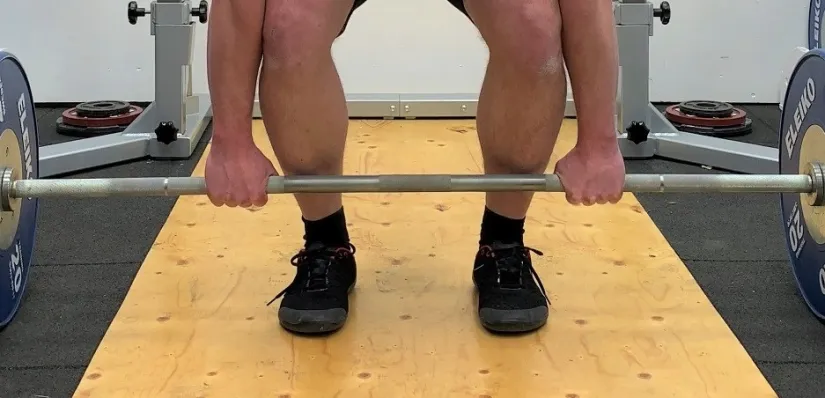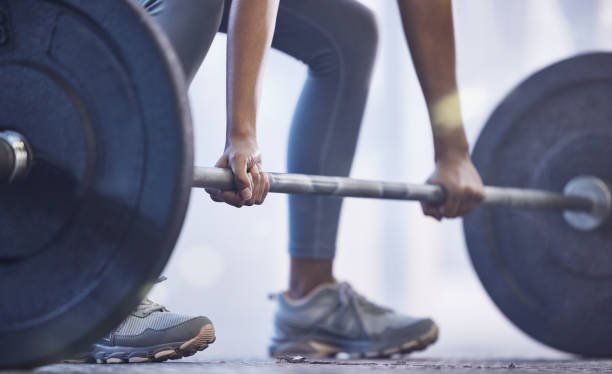How To Do Deadlift: A Step-by-Step Guide To Safe And Proper Form
Published On : 21st Mar 2025

Deadlifts are one of the best exercises for building strength, improving posture, and enhancing overall fitness. However, performing deadlifts incorrectly can lead to serious injuries. This step-by-step guide will ensure you execute deadlifts safely and effectively.
What Are the Benefits of the Deadlift?
Deadlifts are one of the most effective exercises for building overall strength and athleticism. They engage multiple muscle groups, enhance functional fitness, and contribute to better posture and injury prevention. Whether you're an athlete, a casual gym-goer, or someone looking to improve daily movement patterns, incorporating deadlifts into your workout routine can bring significant benefits.
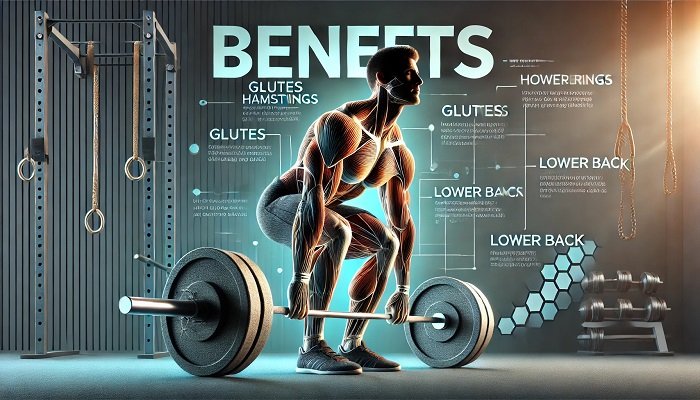
- Full-Body Strength: Engages multiple muscle groups, including legs, back, core, and arms.
- Improved Posture: Strengthens the back muscles and promotes proper alignment.
- Increased Grip Strength: Helps develop a strong grip, which benefits other lifts and daily activities.
- Boosted Athletic Performance: Enhances power and explosiveness for sports and functional movements.
- Fat Loss and Metabolism Boost: Engaging large muscle groups increases calorie burn and metabolic rate.
- Injury Prevention: Strengthens stabilizing muscles to reduce the risk of back and joint injuries.
What Is Proper Deadlift Form? How to Deadlift Safely
Proper deadlift form ensures you maximize benefits while minimizing the risk of injury. Follow these key guidelines:
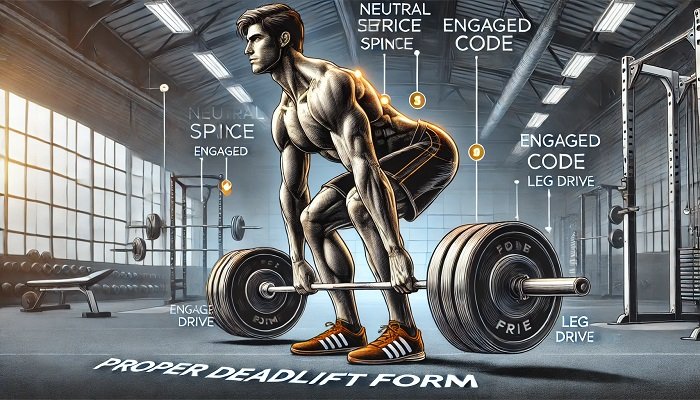
- Maintain a Neutral Spine: Keep your back straight and avoid rounding.
- Engage Your Core: A strong core stabilizes your spine and prevents strain.
- Use Leg Drive: Push through your heels rather than relying on your back.
- Keep the Bar Close: The barbell should stay close to your body throughout the lift.
- Control the Movement: Lift and lower the weight in a controlled manner to prevent unnecessary stress on your joints.
Step-by-Step Guide to Deadlifting Safely

- Step 1: Set Up Your Stance:
- Stand with your feet hip-width apart.
- Position the barbell over the middle of your feet.
- Keep your toes pointing forward or slightly outward.
- Step 2: Grip the Bar Correctly:
- Bend at your hips and knees to lower yourself.
- Grip the bar slightly wider than shoulder-width.
- Use a double overhand grip or a mixed grip (one hand overhand, one underhand) for better control.
- Step 3: Engage Your Core and Hinge at the Hips:
- Keep your spine neutral and chest up.
- Engage your core muscles to stabilize your lower back.
- Pull your shoulder blades slightly back.
- Step 4: Lift With Controlled Movement:
- Drive through your heels and push the floor away.
- Extend your hips and knees simultaneously.
- Keep the bar close to your body as you lift.
- Step 5: Lower the Bar Safely:
- Hinge at your hips and slowly lower the bar.
- Keep your back straight and control the descent.
- Let the bar touch the floor before resetting for the next rep.
- Hinge at your hips and slowly lower the bar.
- Keep your back straight and control the descent.
- Let the bar touch the floor before resetting for the next rep.
You can visit the below help video.
Setting the Bar Down (Should I Drop the Bar on a Deadlift?)
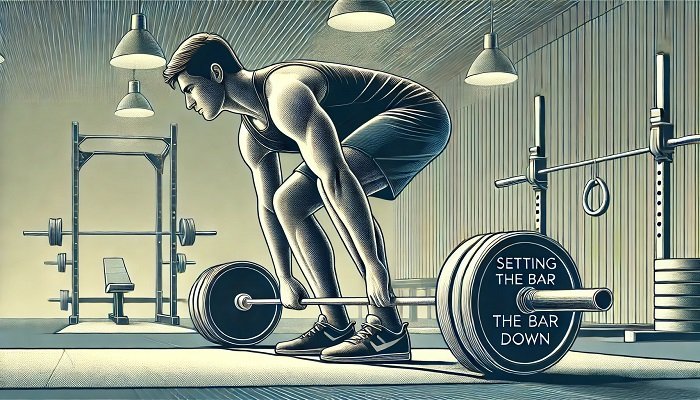
- In most cases, you should lower the bar in a controlled manner rather than dropping it. This helps prevent injury and protects gym flooring.
- If you're lifting extremely heavy weights in a powerlifting or Olympic lifting setting, dropping the bar may be acceptable, but only if the gym allows it and you're using bumper plates.
- Avoid slamming the bar down in a way that could cause loss of control or unnecessary stress on your body.
- For safety and strength gains, focus on the eccentric (lowering) phase of the lift to improve muscle engagement and prevent injury.
Proper Deadlift Grip, Straps, and Other Equipment
Using the right grip and equipment can enhance performance and reduce injury risk:
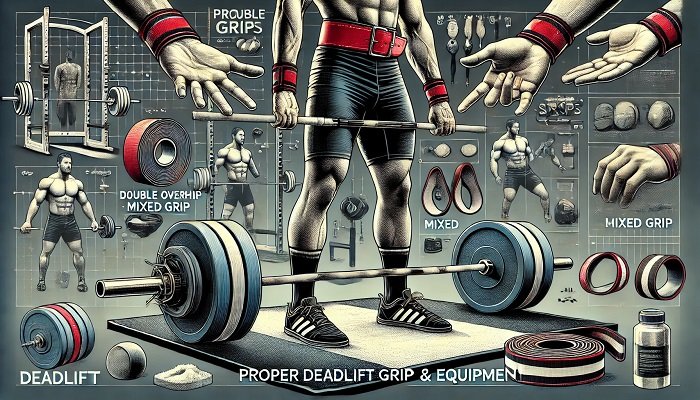
- Grip Variations:
- Double Overhand Grip: Best for lighter weights and grip strength development.
- Mixed Grip: One hand overhand, one underhand—ideal for heavier lifts but may create muscle imbalances if overused.
- Hook Grip: Thumb wrapped under fingers for extra security—common in Olympic lifting.
- Lifting Straps:
- Useful for heavy lifting if grip strength is limiting your performance.
- Should be used sparingly to avoid reliance and maintain natural grip strength.
- Chalk:
- Helps absorb moisture and improve grip.
- Recommended for preventing bar slippage, especially during high-rep sets.
- Weightlifting Belt:
- Provides core and lower back support for maximal lifts.
- Should not replace proper bracing technique or core engagement.
- Proper Footwear:
- Flat shoes (such as Converse or deadlift-specific shoes) or lifting barefoot ensures stability and better force transfer.
- Avoid running shoes, as their cushioned soles reduce balance and power transfer.
What Are the Different Types of Deadlifts?
There are several variations of the deadlift, each targeting different muscle groups and offering unique benefits:
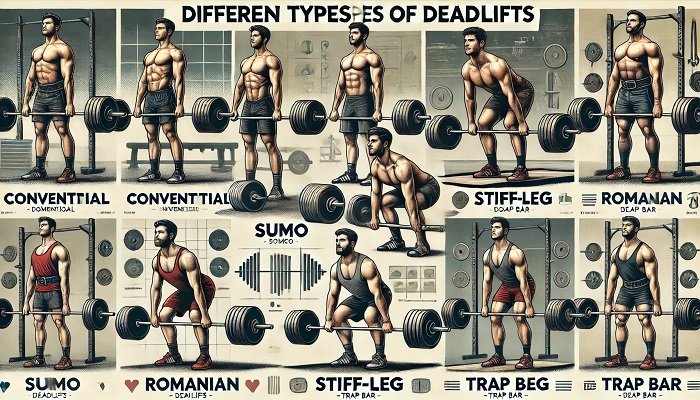
- Conventional Deadlift: The standard deadlift, engaging the back, legs, and core equally.
You can visit the help video Here.
- Sumo Deadlift: A wider stance variation that reduces lower back strain and emphasizes the inner thighs and glutes.
You can visit the help video Here.
- Romanian Deadlift (RDL): Focuses on the hamstrings and glutes with a slight knee bend and controlled movement.
You can visit the help video Here.
- Stiff-Leg Deadlift: Similar to RDL but with straighter legs, emphasizing hamstring flexibility and lower back strength.
You can visit the help video Here.
- Trap Bar Deadlift: Uses a hexagonal bar, reducing spinal load and making it easier for beginners to maintain proper form.
You can visit the help video Here.
- Deficit Deadlift: Performed while standing on an elevated platform to increase range of motion and improve strength off the floor.
You can visit the help video Here.
- Rack Pull: A partial deadlift performed from a higher starting point (such as a squat rack), targeting the upper back and grip strength.
You can visit the help video Here.
- Snatch Grip Deadlift: Uses a wider grip, increasing the range of motion and emphasizing upper back and grip strength.
You can visit the help video Here.
Common Mistakes to Avoid
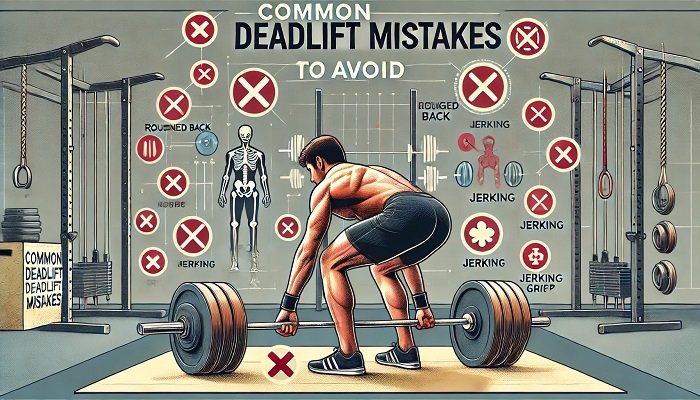
- Rounding the Back: Keep your spine neutral to prevent strain.
- Lifting With Arms: Focus on engaging your legs and hips.
- Jerking the Weight: Move in a controlled manner to avoid injury.
- Overarching the Back at Lockout: Stand tall but don’t hyperextend your lower back.
Tips for Safe and Effective Deadlifting

- Warm up properly before lifting.
- Start with a light weight to practice form.
- Use lifting straps or chalk for better grip if needed.
- Wear a weightlifting belt for extra lower back support if lifting heavy.
- Stop if you feel any pain or discomfort.
By following these steps and avoiding common mistakes, you can master the deadlift and enjoy its full benefits while minimizing the risk of injury.

Happy lifting!






